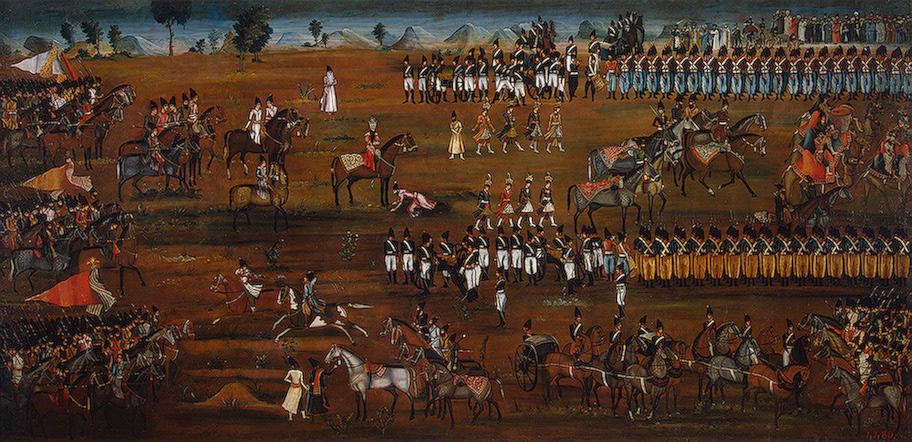Persian Military Review with Fath Ali Shah and Abbas Mirza, c.1815-16

Oil on canvas. 203x415 cm.
Iran. Qajar Dynasty. Circa 1815/1816.
A multifigure composition spreads across this huge canvas, depicting a real event which took place in the Ujan valley in July 1813: the heir to the Iranian throne, Abbas Mirza, showing his father, Fath Ali Shah, the regular army, newly reorganized along European lines by English and French instructors.
In the upper half of the painting, left of centre, is a rider in red, Fath Ali Shah himself, and at his horse's feet a figure in pink prostrating up on the ground - Abbas Mirza.
The ruler of Azerbaijan, the most important and the richest province in Iran, Crown Prince Abbas Mirza makes the lowest possible bow, of the kind made even to the ruling shah only on special occasions. The Shah and his numerous suite are preparing to pass between the ranks of soldiers wearing uniforms of European type.
By the right edge of the painting are musicians on camels, and to the left - riders leading horses in rich trappings. Further left are eight noble youths wearing head-dresses with feathers, arranged in two rows: these are the fast runners who always accompanied the ruler when he left the palace to clear the way before him. At the very top right are the Ulema (theologians and tutors in law) in turbans and long robes with a group of people performing a ritual sacrifice of rams.
The painting formed part of the decoration of the Ujan castle of Abbas Mirza, from where in 1828 it was removed by the Russians as a war trophy and brought to the Winter Palace in St Petersburg.
Source: State Hermitage Museum.
Back to Persian 19th Century Soldiers

